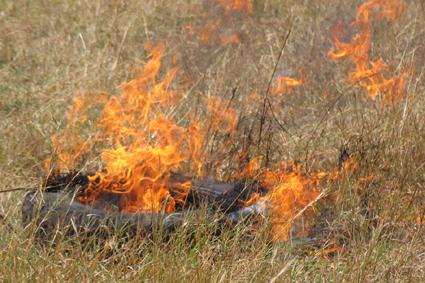
How does management burning influence wildlife habitat choice?
A study on fire impact on wildlife behaviour.
Why burning as a management tool?
In tropical countries burning is frequently used as a tool to maintain grassland and increase vegetation productivity. A great deal of research has focused on different aspects of fire impact. What happens to grass, trees and soil when burning has been investigated numerous times. However, impact on the wildlife in such fire derived ecosystems is less studied and knowledge about what happens with the behaviour of the larger fauna as a consequence of burning is scarce.
I wanted to know how management burning affect the habitat choice and behaviour of larger mammals and birds in an African savannah.
By burning the vegetation plant nutrients are released and a new growth cycle is started which leads to rejuvenated plant material. The fire converts tall dry grass to new fresh grass rich in protein, so-called green-flush. This green-flush is appreciated by several species on the savannah, however not all species benefit from this short green grass. Some species have to eat a certain portion of dry grass to support a high intake requirement. Others simply cannot eat the grass because of it being to short.
How did I go about?
To study this matter a method called the line-transect survey or the line-transect method was used. A team consising of one observer, one writer, one navigator and one driver collected data consisting of number of animals and their species. Behaviour of all counted animals was also recorded. Observations were made from the roof of a 4x4 wheel jeep with seats on the roof for the observer and writer. Grass samples were also collected to estimate the amount of biomass that was avaliable on each transect. Amount of biomass was divided into three different biomass classes to see what animals preferred high biomass, medium biomass or low biomass.
Where did the study take place?
The study was conducted in the Mara Conservancy in Masaai Mara, Kenya from September 2004 to February 2005. Data collection for animal behaviour and grass samples was carried out in January and February 2005. Data was collected for seven mammal species: buffalo, warthog, topi, kongoni, waterbuck, Thomson’s gazelle, elephant and one bird species, the secretary bird.
What I found out.
My result show that most species observed used the burnt areas in some way. Buffalo, waterbuck, warthog, Thomson’s gazelle, topi, kongoni and secretary bird were mostly observed in the burnt areas. Only elephant preferred the unburnt control transects. When looking at what biomass classes were chosen by the animals most species showed a preferrence for the low biomass but again the elephant chose the opposite, the high biomass transects.
Responsible for this page:
Director of undergraduate studies Biology
Last updated:
